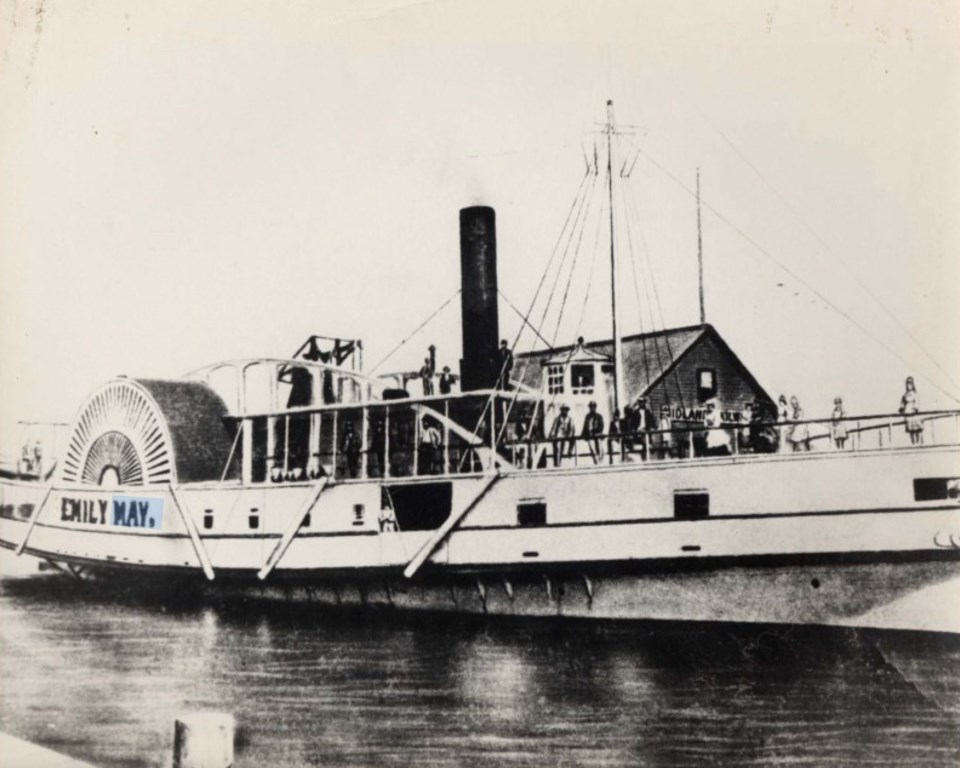In the 19th century, Belle Ewart was not the sleepy community of today. Instead, it was a major shipping nexus on Lake Simcoe and the home port of the ‘Queen of the Lake Simcoe Steamers,’ the elegant Emily May, the most famous steamboat ever to sail the waters of Lake Simcoe.
The Emily May was built at Belle Ewart by Capt. Hugh Chisholm, an old hand at Lake Simcoe navigation, but was owned by Capt. Isaac May, of Beaverton, with financing from a consortium of Barrie merchants.
The Emily May was a side-wheeler, measuring 154 feet (47 metres) in length and 24 feet (7.3 metres) in width, making her the largest steamboat to ever sail Lake Simcoe. She could safely accommodate almost 500 passengers in style. (Some sources say 800, but that is far too many.) Thanks to new engines that were at the pinnacle of technology at the time, the ship was capable of steaming at sustained speeds of 35 km/h, an incredible feat for the day.
May christened the ship the Emily May after his beloved daughter, a girl whose flawless beauty was said to have matched that of the vessel named in her honour. The vessel’s inaugural voyage was on July 12, 1861.
May used the ship to transport people, freight and mail around the lake. After connecting with trains at Belle Ewart in the morning to take on passengers and goods, the Emily May would set sail. One day, she would sail up the western side of Lake Simcoe; the next, she would sail up the eastern side, calling on all ports — large and small — along the way, including Orillia, Hawkestone, Barrie, Orillia, Beaverton, Jackson’s Point and Belle Ewart. She would even, on occasion, venture up the Holland River to Holland Landing.
Her unmatched speed and reliability allowed her to easily complete the round-trip journey in a single day, whereas many of her competitors struggled to do the same and had to skip some communities along the way or else make hurried stops that put a strain on the crew as they loaded and off-loaded freight.
To supplement his income, May also employed the Emily May as an excursion vessel, hosting floating parties and sightseeing soirees.
The Emily May was every bit the success her owner had envisioned her to be.
At least for a time.
The remainder of her story will follow in my next column.



